Various scenes unfold in the Great Hall during University Day on March 24, 1995. The video starts with a close-up of a banner bearing the University seal. Students, faculty, staff, alumni, and members of the local media linger on the main floor of the building. Stanley Bey, a class of 1959 Monmouth alum and a trustee at the time, holds up an issue of the University paper, The Outlook, with the top story’s headline reading "A New Era." A dixieland band plays in the midst of the crowd. We see Shadow, Monmouth University’s Hawk mascot, posing for photos with students in the Great Hall. University President Rebecca Stafford addresses the crowd from the first floor staircase. The video then zooms back in on the University seal banner and fades to black.
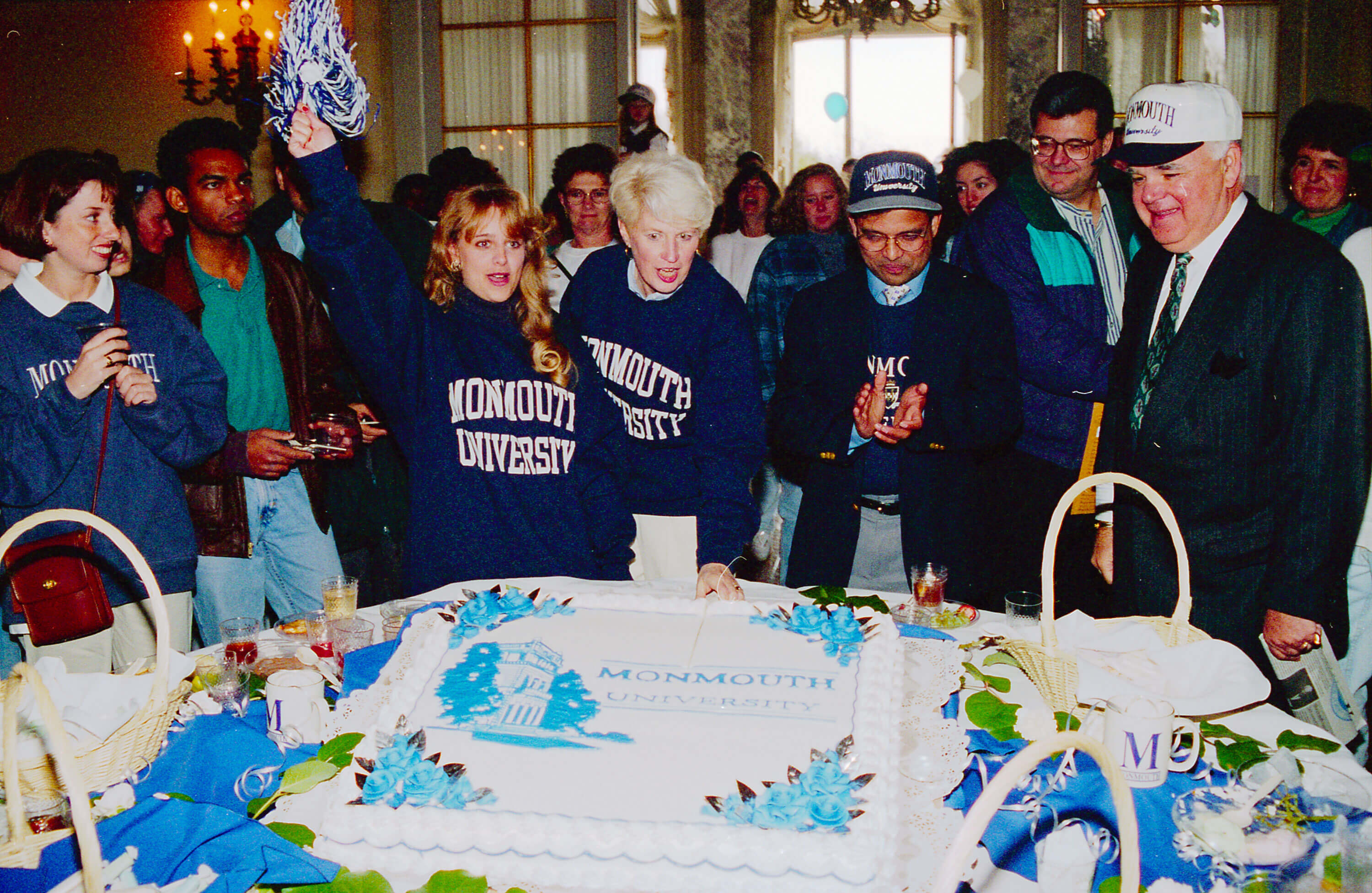
A Long Time Coming
How Monmouth College became a University.
When Monmouth attained university status 25 years ago this month, it was the culmination of a nearly decade-long undertaking.
Beginning in the mid-1980s, Monmouth and several other New Jersey colleges started lobbying the state’s Board of Higher Education to amend a 1966 law which prohibited institutions from becoming universities unless they offered doctoral programs.
But as then-Monmouth President Samuel Magill explained in a 1988 New York Times op-ed, such regulations weren’t in line with the higher education landscape in many other states. Even more concerning, Magill wrote, was that they were putting New Jersey “at a competitive disadvantage with neighboring states when it comes to higher-education opportunities.”
College-bound seniors were exiting the Garden State in large numbers, he wrote, and it was getting harder for colleges here to recruit from out of state since many students sought the prestige that comes with attending a university. In short, it was time to update the law to allow New Jersey colleges the opportunity to become universities, Magill argued.
Over the next several years, legislative attempts to do that fell short. Nonetheless, Magill kept up the pressure until his retirement in 1993.
It wasn’t until 1994 that the state board finally relented, amending its regulations and creating a new designation: teaching universities. Under the new guidelines, colleges that offered a certain number of graduate programs, met specific enrollment standards, and showed a commitment to excellence in teaching and learning could apply for teaching university status, regardless of whether they offered doctoral programs.
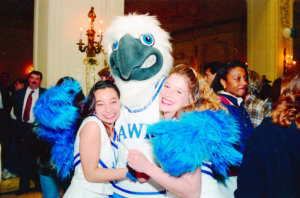
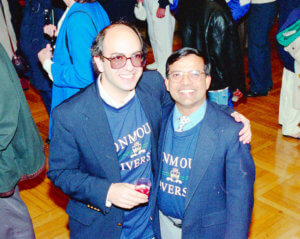
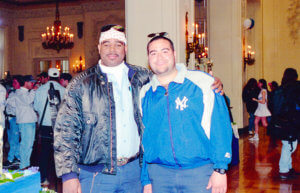
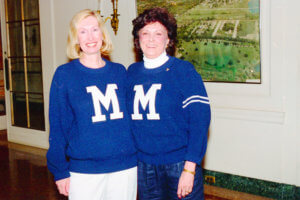
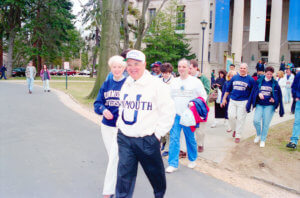
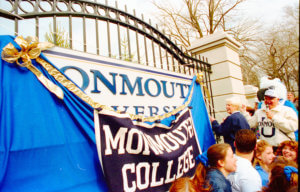
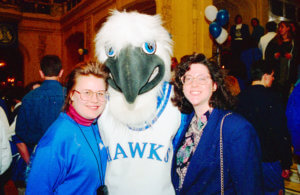
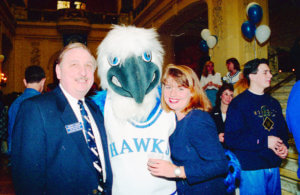
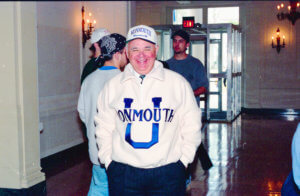
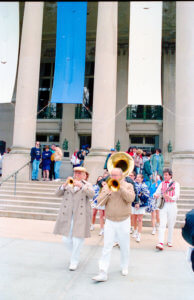
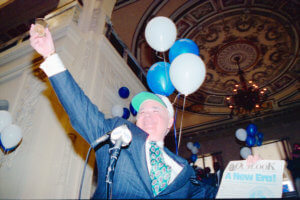
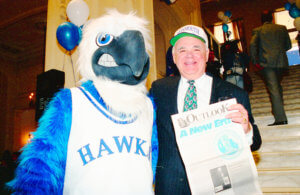
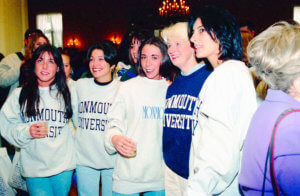
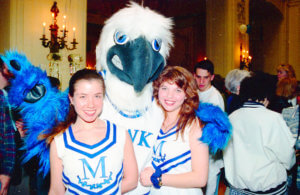
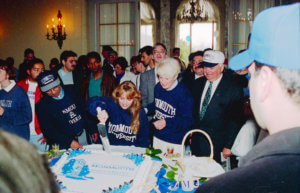
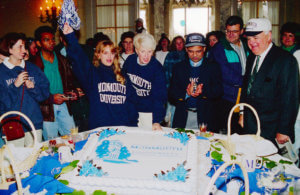
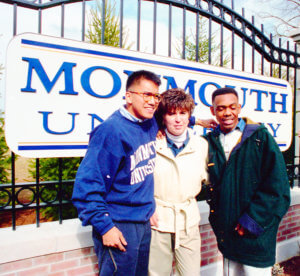
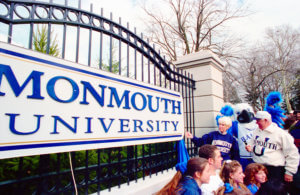
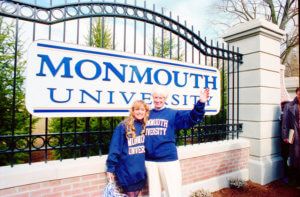
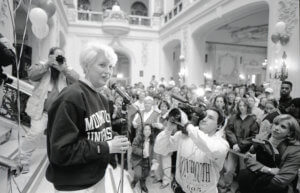
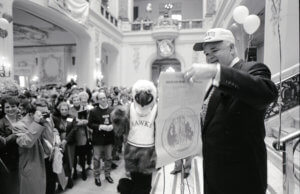
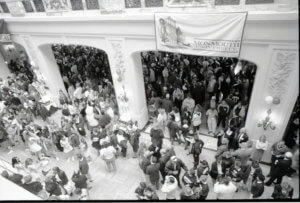
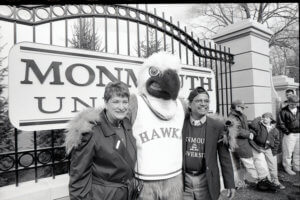
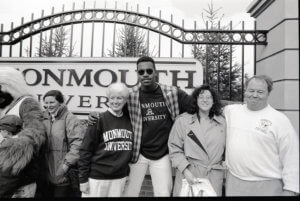
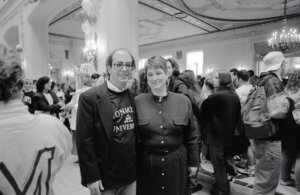

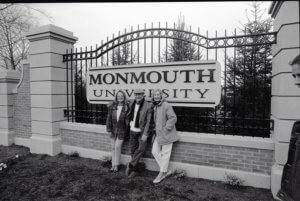
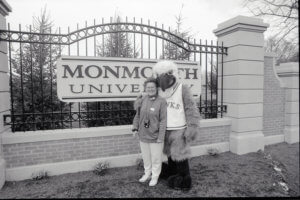
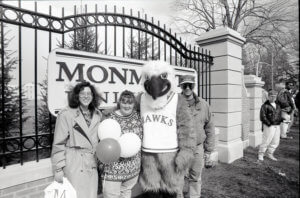
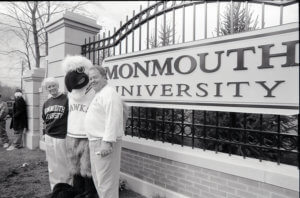
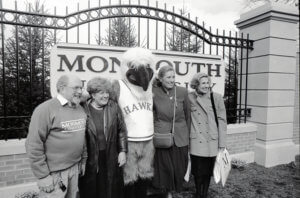
Various scenes from University Day, March 24, 1995.
“That description really fit us like a glove,” explains Stanley Bey ’59, who was a Monmouth trustee at the time. “So that’s the course we took.”
Monmouth applied for teaching university status, but before the Board of Higher Education could issue a ruling, it was disbanded, and replaced shortly thereafter by a new oversight body: the Commission on Higher Education.
In summer 1994, then-President Rebecca Stafford and then-Provost Thomas Pearson met with officials in Trenton to discuss Monmouth’s application. “It became clear we would have to do a bit of ‘infrastructure’ work,” such as designating which faculty members would teach graduate courses and organizing existing academic programs under a number of schools, says Pearson. Much of the work was already underway as part of Stafford’s strategic plan for Monmouth. “But [in the application] there had to be a clear indication to the commission that the college was reorganizing itself to assume a teaching university mission,” says Pearson.
After that meeting, Monmouth filed a new application, one that more clearly “showed we had the resource base to function as a university,” says Pearson. A successful site inspection by state officials followed in fall 1994, and a unanimous recommendation from the Council of College Presidents in February 1995 bolstered Monmouth’s chances.
Finally, on March 24, 1995, at 10:40 a.m., the New Jersey Commission on Higher Education granted university status to Monmouth.
“It was a unanimous vote with one abstention: me,” recalls Bey. By then, he was chair of Monmouth’s Board of Trustees and serving on the state commission. “I couldn’t vote for my own school,” says Bey. But it didn’t matter, he adds. “I considered the vote a formality. We [Monmouth] had done our homework and there were no issues. All the questions had been answered. All the requirements had been met, and we were ready to go.”
Stafford was at the meeting, and remembers that after the vote was announced, she opened her suit jacket to proudly reveal a Monmouth University sweatshirt she had made for the occasion. After handing out some Monmouth University hats to the commissioners, Stafford, Bey, Pearson, and the rest of the Monmouth contingent headed back to campus to celebrate.
And oh, what a celebration it was. Sirens wailed and a Dixieland band played as students, faculty, staff, alumni, and local media filed into the Great Hall. “This is the end of a long dream,” Stafford told the crowd. Bey, holding up a special edition of The Outlook that bore the headline “A New Era,” offered a toast: “Goodbye, Monmouth College. Hello, Monmouth University. We love you!” Afterward, many in attendance paraded across campus and watched Stafford unveil the new Monmouth University sign along Cedar Ave.
“Memories soften over time, but that’s one that will always remain foremost in my mind,” says Mary Kane ’95 about that day. “There was so much energy and enthusiasm across campus.” As president of the Student Government Association for two years, Kane had been closely involved with the application process.
A few days after Monmouth became a university, she was recruited by former University Photographer Jim Reme for a photo shoot.

“We purchased a Monmouth College sweatshirt at the bookstore, then we crossed out the word ‘college’ and wrote ‘University’ on it,” recalls Kane. Reme photographed her with Wilson Hall in the background. The photo was featured on the cover of this magazine’s spring 1995 issue, the first to be published with “University” in the nameplate.
“Being named a university is not the end; it is the beginning,” Bey told this magazine at the time. Indeed, attaining the designation brought new challenges. Enrollment had already started increasing by March 1995; it continued to climb once Monmouth became a university. Stafford recalls some people worried there wasn’t enough classroom and residential space to accommodate the growing number of students, nor enough faculty to teach them.
It all worked out, of course. In the years after Monmouth attained university status, new academic programs were created (including two doctoral programs). The Centers of Distinction were founded and continue to thrive. New buildings went up to accommodate it all: McAllan, Rechnitz, Pozycki, Mullaney, and Hesse Halls; the Plangere Center; OceanFirst Bank Center. Renovations to Edison made it a state-of-the-art science facility.
University status also made it easier to recruit top-notch faculty, says Pearson, who stepped down as provost in 2014 and today is a professor of history. “Not faculty who avoid students in order to do their scholarship, [but rather] faculty who bring their scholarship into their teaching to enrich it,” he explains.
“The idea was always to make sure that the real essence of Monmouth did not change as we grew into this university designation,” says Pearson. “I think our mission as teacher scholars is still very strong, and it’s been passed on to successive generations.”